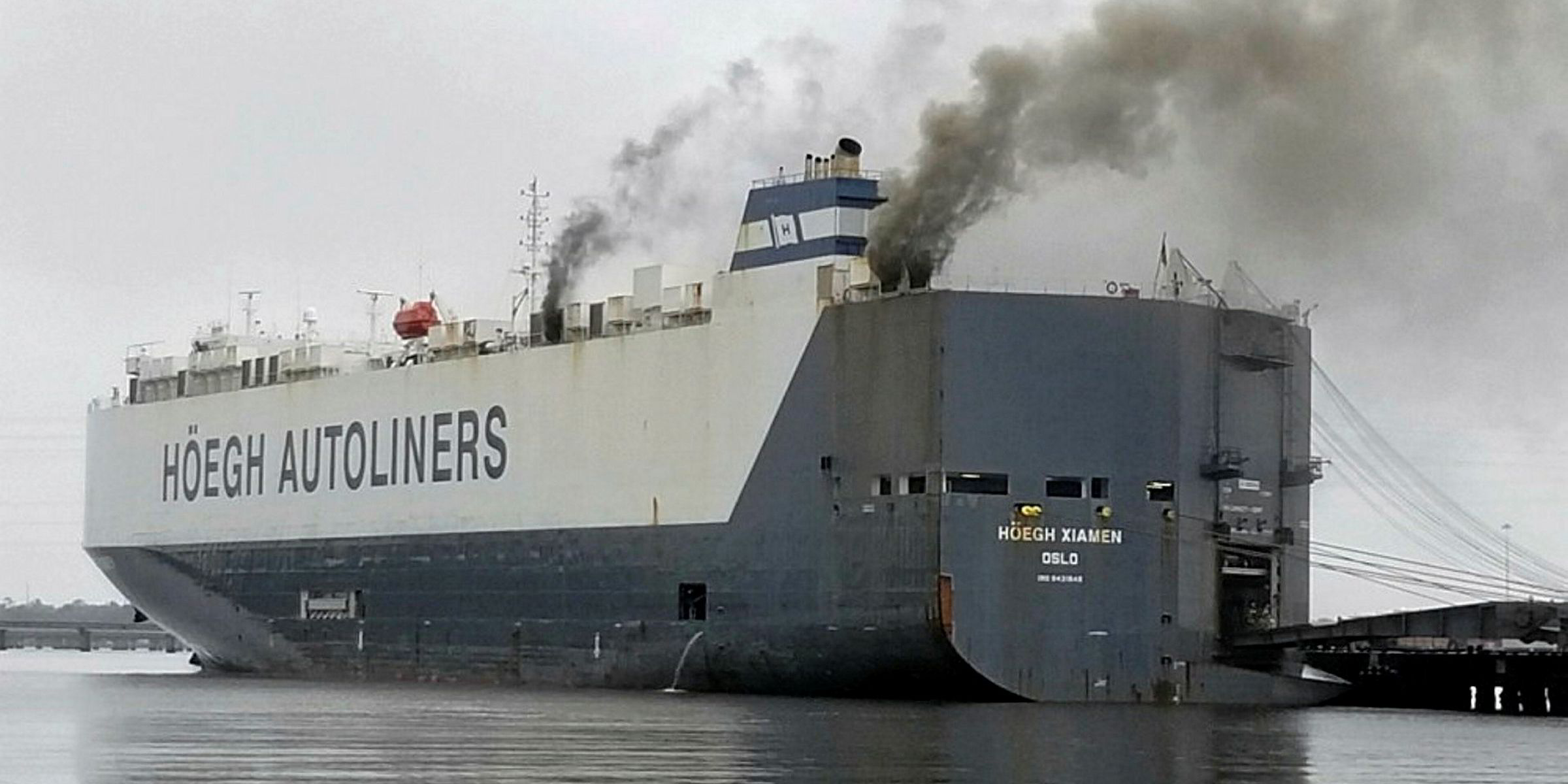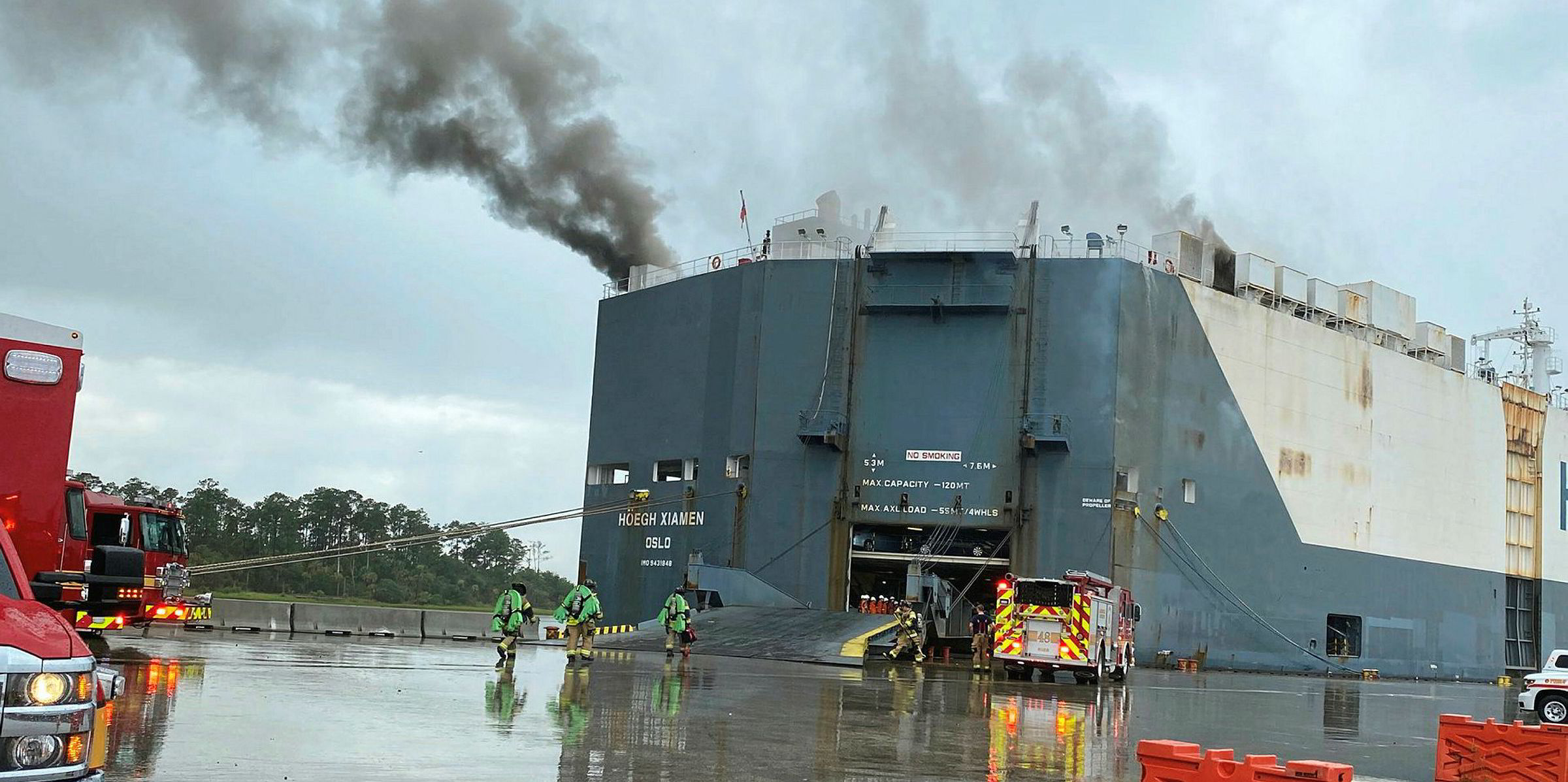Norwegian marine insurers will have to foot a large slice of an escalating bill for a blaze on a Hoegh Autoliners car carrier at Blount Island Marine Terminal at Jacksonville in Florida.
Arendal-based Gard is the protection and indemnity cover provider for the 4,900-ceu Hoegh Xiamen (built 2010), which caught fire on 4 June, and is also listed among the ship’s hull insurers.
The Norwegian Hull Club, which is headquartered in Bergen, is the lead claims handler for the vessel’s hull insurance.
Insurance sources suggest that — judging by similar cases in the past — the Hoegh Xiamen’s cargo of 2,400 secondhand cars, destined for Africa, will almost certainly be declared a write-off.
The fire started on cargo deck number 7 and spread to “several" others, according to Hoegh. Internal temperatures in the cargo holds were reported to be up to 260C, and there was an explosion.
Cargo loss
Most of the bill for the cargo loss will likely fall on Gard’s desk if the incident is judged to be a shipowner liability.
However, as the cars were secondhand, they have a relatively low value. It could be the salvage operation that ends up being the highest cost.
Local company Resolve Marine was contracted to handle the salvage as the vessel’s appointed US Oil Pollution Act 90 emergency responder.
The salvor was contracted under Lloyd’s Open Form terms, including a special compensation P&I clause known as a Scopic, which means remuneration for the work will be based on the time and material used, plus a standard 25% uplift regardless of the outcome of the operation.
The blaze was extinguished on Saturday after eight days of continuous firefighting operations by the Jacksonville Fire and Rescue Department, Resolve’s own firefighting team and specialist tugs.
Seven firefighters were reported injured, including two who required hospital treatment.
The salvage operation has also involved extensive pollution prevention measures to strict local environmental standards.
The remaining question for insurers will be whether the hull — valued by VesselsValue at around $22.5m — can be saved.
Critical measures
Measures were put in place to protect the critical machinery areas of the vessel, as well as the bunker tanks, to prevent further fires or explosions.
The ship’s hull was also continuously cooled by water spray to prevent the steel from weakening. The vessel has a slight list but firefighting water does not appear to have caused any stability problems.
Despite these efforts, the hull could still end up being declared a constructive total loss. A similar incident involving a fire on the 5,700-ceu Auto Banner (built 1988) at the port of Ulsan, South Korea, in May 2018 resulted in the ship being written off.
However, some car carriers have survived major fires to trade again, including the 6,414-ceu Sincerity Ace (built 2009), which caught fire in the Pacific in 2008.
The Hoegh Xiamen fire is likely to add a considerable sum to the recent losses sustained by the marine insurance industry linked to car-carrier casualties.
Carrier claims
The North P&I Club recently reported that claims related to the capsize of the 7,700-ceu car carrier Golden Ray (built 2017) at the port of Brunswick are likely to amount to more than $400m.
It also highlighted the 57,000-gt conro vessel Grande America (built 1997), which sank in the Bay of Biscay with a cargo of cars, as another painful loss.
The Hoegh Xiamen incident will be investigated by the Accident Investigation Board Norway as it is a Norwegian-flagged vessel.
The safety of the cargo of secondhand cars is likely to be the focus of the probe. Secondhand cars are generally recognised as a fire-safety threat because they contain gasoline and old batteries, both of which can combust.






